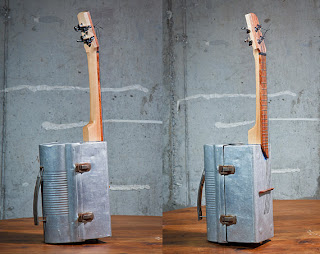Hello!
I own a soprano Makala Dolphin uke, and I love it. What I didn't love, though, were the strings it came with. So, after about a month of owning it, I decided to buy some Aquila strings for it. I didn't like the original strings because they tended to have a buzzing noise to them and weren't as... cheerful sounding as I would have liked.
But why did I choose Aquila?
Firstly, I had read a few reviews that recommended Aquila strings for their great sound and life span. The feedback for them were positive, and people said that the strings brought life to any ukulele you bought them for.
Secondly, when I read about what they were made from, I was, I admit, intrigued. They're made from nylgut. "Nylgut has a specific density and acoustical qualities nearly identical to that of gut, and is the first truly successful synthetic version of the natural product. Other strong points of Nylgut are its elevated resistance to wear under tension-greater than that of gut- but even more important is its extraordinary immunity to changes of climate, considerably better than that of Nylon and thereby ensuring a superior stability of tuning under normal conditions." <- http://www.aquilausa.com/uke_strings.html
So yeah, I was sold. I bought them off of Amazon for a decent price and got them in the mail four days later. Once I got them on the ukulele it took about two days for the strings to stretch and keep their tune. Once I could play it without re-tuning the strings every other minute I absolutely LOVED them. They sound great; clear and a lot louder then the Nylon strings my uke came with. They don't buzz like the Nylon, they feel better against my fingers, the sound resonates great, and I even like the look of them better.
Here's what they looked like when I got them on my ukulele:
Remember when (and if) you buy these strings, make sure you check the size. If you have a soprano like me, you'll want to get the soprano Aquila strings. If you have a tenor or a concert, you'll want to get the strings for those sizes. I really like these strings, and if you get them, I sincerely hope you enjoy them!
-Ashley
I own a soprano Makala Dolphin uke, and I love it. What I didn't love, though, were the strings it came with. So, after about a month of owning it, I decided to buy some Aquila strings for it. I didn't like the original strings because they tended to have a buzzing noise to them and weren't as... cheerful sounding as I would have liked.
But why did I choose Aquila?
Firstly, I had read a few reviews that recommended Aquila strings for their great sound and life span. The feedback for them were positive, and people said that the strings brought life to any ukulele you bought them for.
Secondly, when I read about what they were made from, I was, I admit, intrigued. They're made from nylgut. "Nylgut has a specific density and acoustical qualities nearly identical to that of gut, and is the first truly successful synthetic version of the natural product. Other strong points of Nylgut are its elevated resistance to wear under tension-greater than that of gut- but even more important is its extraordinary immunity to changes of climate, considerably better than that of Nylon and thereby ensuring a superior stability of tuning under normal conditions." <- http://www.aquilausa.com/uke_strings.html
So yeah, I was sold. I bought them off of Amazon for a decent price and got them in the mail four days later. Once I got them on the ukulele it took about two days for the strings to stretch and keep their tune. Once I could play it without re-tuning the strings every other minute I absolutely LOVED them. They sound great; clear and a lot louder then the Nylon strings my uke came with. They don't buzz like the Nylon, they feel better against my fingers, the sound resonates great, and I even like the look of them better.
Here's what they looked like when I got them on my ukulele:
Remember when (and if) you buy these strings, make sure you check the size. If you have a soprano like me, you'll want to get the soprano Aquila strings. If you have a tenor or a concert, you'll want to get the strings for those sizes. I really like these strings, and if you get them, I sincerely hope you enjoy them!
-Ashley














